#Database Management System
Explore tagged Tumblr posts
Text
How to Choose a Database Management System: The Best Tools and Software for 2025
Data is at the core of every modern business. Whether it’s customer information, financial records, or product inventories, managing data efficiently is crucial for smooth operations and decision-making. A database management system (DBMS) helps businesses store, organize, and retrieve data securely and efficiently.
However, with so many database management tools and software available, choosing the right one can be challenging. Businesses need to consider factors like scalability, security, performance, and cost before making a decision.
This article explores how to choose the best database management system (DBMS) for your needs and highlights some of the top tools available in 2025.
1. What is a Database Management System (DBMS)?
A database management system (DBMS) is software that enables users to create, retrieve, update, and manage data efficiently. It acts as an interface between the database and users, ensuring data is stored securely and can be accessed when needed.
Key Functions of a DBMS
Data Storage — Organizes large volumes of structured and unstructured data.
Data Retrieval — Allows users and applications to access specific information quickly.
Data Security — Protects sensitive information from unauthorized access.
Data Integrity — Ensures accuracy and consistency in stored data.
Multi-User Access — Supports multiple users accessing and modifying data simultaneously.
Businesses of all sizes — from startups to enterprises — need a well-structured database to manage operations efficiently.
2. How to Choose a Database Management System?
Selecting the right database management tools and software requires careful consideration. The ideal DBMS should align with your business needs, performance expectations, and budget.
Factors to Consider When Choosing a DBMS
Scalability
Can the database handle growing amounts of data as your business expands? Cloud-based and distributed database solutions offer better scalability than traditional on-premise databases.
Performance
Look for a DBMS that ensures fast query processing and efficient indexing. Performance is crucial for applications handling real-time data processing, such as e-commerce or financial platforms.
Security Features
Data security is critical, especially for businesses handling sensitive information. The DBMS should offer encryption, access control, and regular backups to prevent data breaches.
Compatibility and Integration
Your DBMS should integrate seamlessly with existing software, including ERP systems, business intelligence tools, and cloud applications.
Cost and Licensing
Some database management systems are open-source and free, while others require licensing fees or subscription models. Factor in hosting, maintenance, and upgrade costs before making a choice.
Ease of Use and Administration
If your team lacks database expertise, choose a DBMS with a user-friendly interface and automated management features.
3. Best Database Management Tools and Software in 2025
The database landscape is diverse, with options ranging from relational databases (SQL) to NoSQL and cloud-based solutions. Below are some of the best database management tools and software in 2025.
A) Relational Database Management Systems (RDBMS) (SQL-Based)
Relational databases store data in structured tables, making them ideal for applications that require consistency and complex queries.
1. MySQL
One of the most popular open-source relational databases.
Best for web applications, e-commerce, and content management systems.
Supports high availability and replication.
2. PostgreSQL
Advanced open-source RDBMS with powerful performance and security features.
Great for handling complex queries and large-scale data applications.
Supports JSON and NoSQL-like functionality.
3. Microsoft SQL Server
A high-performance RDBMS designed for enterprises.
Integrates with Microsoft Azure and business intelligence tools.
Strong security features like Transparent Data Encryption (TDE).
4. Oracle Database
Best for large enterprises that need high availability and reliability.
Features AI-powered automation and in-memory data processing.
High licensing costs but offers advanced analytics and security.
B) NoSQL Database Management Systems
NoSQL databases are designed for handling unstructured and semi-structured data, making them ideal for real-time applications, big data, and cloud-based services.
5. MongoDB
A document-based NoSQL database used for flexible data storage.
Ideal for content management systems, mobile applications, and IoT.
Supports horizontal scaling and distributed storage.
6. Cassandra
Best for handling large-scale distributed data across multiple servers.
Used by major tech companies like Netflix and Facebook.
Offers fault tolerance and high availability.
7. Firebase
A cloud-based NoSQL database by Google, built for mobile and web apps.
Offers real-time data synchronization and offline access.
Best suited for startups and small businesses.
C) Cloud-Based Database Management Systems
Cloud databases provide scalability, flexibility, and cost efficiency, making them an excellent choice for businesses that want managed database solutions.
8. Amazon RDS (Relational Database Service)
A fully managed cloud database service by AWS.
Supports MySQL, PostgreSQL, SQL Server, and more.
Automated backups, scaling, and security management.
9. Google Cloud Firestore
A NoSQL document-based database optimized for real-time applications.
Integrates well with Google Cloud services.
Serverless, making it easy to scale applications.
10. Microsoft Azure SQL Database
A cloud-based RDBMS designed for high availability and disaster recovery.
AI-powered performance tuning and security monitoring.
Supports automatic scaling based on workload.
4. Key Trends in Database Management for 2025
As businesses generate more data than ever, database technologies are evolving. Here are some trends shaping the future of database management tools and software in 2025.
AI and Automation in Database Management
AI-powered databases like Oracle Autonomous Database are improving performance, security, and self-healing capabilities without human intervention.
Multi-Cloud and Hybrid Databases
Businesses are increasingly using multi-cloud and hybrid database solutions to avoid vendor lock-in and improve redundancy.
Edge Computing and Distributed Databases
With the rise of IoT and edge computing, distributed databases like Apache Cassandra are becoming more popular for handling real-time data processing at scale.
Graph Databases for Advanced Analytics
Graph databases like Neo4j are being used for applications requiring deep data relationships, such as fraud detection and recommendation engines.
Choosing the right database system depends on your business needs, application type, and data management requirements. If your business requires structured data storage and complex queries, a relational database like MySQL or PostgreSQL is ideal.
For real-time applications, big data, and scalability, a NoSQL solution like MongoDB or Firebase may be the best choice. For businesses looking for fully managed, scalable solutions, cloud databases like Amazon RDS or Microsoft Azure SQL Database provide automated security and maintenance.
0 notes
Text
How to Start Your Journey in Computer Science

Introduction
Computer Science is one of the most dynamic and in-demand fields today. From mobile apps to AI, data analysis to cybersecurity, the scope of computer science is vast. For students wondering where to begin, the journey starts with building strong fundamentals.
Whether you're a school student or a graduate exploring your career options, learning core programming languages, data handling, and software skills is the first step. If you’re located in areas like Yamuna Vihar or Uttam Nagar, you’ll find a wide range of structured learning options available to get started on the right path.
1. Begin with Programming Fundamentals
The foundation of computer science begins with learning programming languages. Languages like C and C++ are ideal for beginners as they help build logic and understanding of how a computer processes instructions. Many students begin with:
C Classes or C++ Classes
C++ Coaching Instituteor nearby areas
These help you master the syntax, data types, control structures, and problem-solving skills necessary for advanced learning.
2. Advance to Object-Oriented Programming (OOP)
Once you’re comfortable with the basics, moving on to C++ and Java is a smart move. These object-oriented languages teach you how to write reusable code and develop software systematically.
Students often opt for:
C++ Training or Java Training
Java Coaching Institute for deeper concept clarity
Java Classes for hands-on project experience
These courses prepare you for real-world applications and interviews in software roles.
3. Strengthen Your Data Structure Knowledge
Knowing how to write code is just the beginning. Efficient coding depends on how well you understand Data Structures. This includes arrays, linked lists, stacks, queues, trees, and graphs.
If you're planning to enter software development, software engineering, or competitive programming, joining a good Data Structure Course in or a Data Structure Training Institute is essential.
You can also explore:
Data Structure Coaching Institute in Yamuna Vihar
Data Structure Classeswith live problem-solving sessions
4. Learn About Databases and Query Languages
Another important area is managing and retrieving data. SQL and MySQL are used in almost every application that stores data—from websites to mobile apps. Learning how to interact with databases gives you an edge.
You can begin with:
SQL Classes or SQL Classes
MySQL Training Institute or MySQL
Practical exposure through MySQL Coaching Institute or MySQL Coaching helps in writing efficient queries and understanding database management.
5. Explore Specializations like Web & App Development
Once you’re comfortable with basic coding and data handling, you can start exploring more specific fields. Web technologies like HTML, CSS, JavaScript, JSP, and frameworks like React or Angular are a great way to enter front-end or back-end development.
You’ll find JSP Coaching and JSP Coaching in Uttam Nagar useful if you're interested in Java-based web development.
6. Build a Strong Foundation with Computer Applications
If you’re starting from scratch or want a general overview, Diploma in Computer Application (DCA) and Advanced Diploma in Computer Application (ADCA) are valuable. They cover basic software tools, internet usage, data handling, and more.
Many students choose:
DCA Course or DCA Course
Advanced Diploma in Computer Application for deeper learning
Computer Application Coaching Institute for practical training
7. Practice and Build Projects
Learning theory is not enough. Building real-time projects—like calculators, mini games, websites, or management systems—helps you apply your knowledge and showcase your skills to future employers.
Join local Computer Science Training Institutes in Uttam nagar that focus on project-based learning. Hands-on experience not only strengthens your understanding but also boosts your confidence.
Final Thoughts
The journey into computer science is not a sprint—it's a step-by-step learning experience. Whether you’re looking for C++ Coaching , Data Structure Coaching, or even Computer Science Course, the key is to start with the basics and grow gradually.
Choose courses that focus on real-world applications, give you coding practice, and help you understand concepts deeply. The demand for skilled programmers, software developers, and data analysts is only growing. Now is the right time to begin your journey.
Suggested Links:
C++ Programming Language
Database Management System
Advanced Data Structures
Learn Core Java
#computer science course#computer science training#database management system#java training#C++ programming language course#advance Data structures course#python course in yamuna vihar#python course in uttam nagar
0 notes
Text
Database Management System Basics: Everything You Need to Know

Learn about Database Management Systems (DBMS) and their importance in data handling. This tutorial covers types, functions, and key concepts to help you understand efficient data storage and management.
0 notes
Text
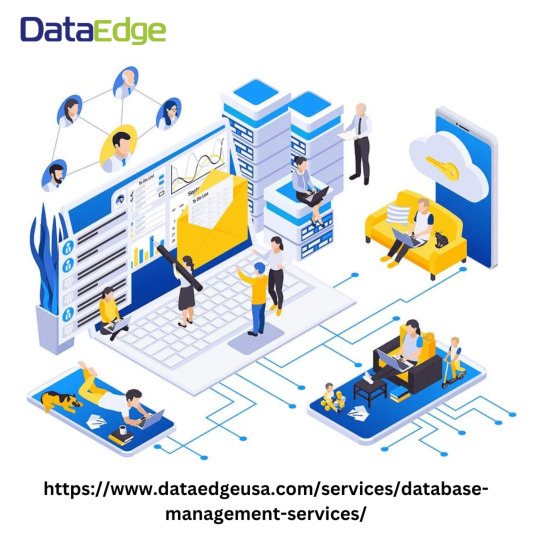
Leading database management provider Dataedge uses a range of contemporary database sources to assist business owners in managing their data and boosting productivity.
#data management#database management#database management company#data management services#database management system#database development services in usa#database software as a service#information management
0 notes
Text
Maximizing Efficiency: Data Integration Tools for Streamlined Operations
Data integration tools are crucial components in modern information technology ecosystems. These tools facilitate the extraction, transformation, and loading (ETL) processes necessary for consolidating data from various databases, applications, and systems.
By streamlining data integration, these tools enhance operational efficiency, enable more informed decision-making, and foster a holistic view of organizational data assets. Leveraging features such as data cleansing, deduplication, and real-time processing, data integration tools play a vital role in enabling businesses to derive actionable insights and drive innovation from their diverse data sources.
0 notes
Text
Data Analytics Tools: A Comprehensive Overview
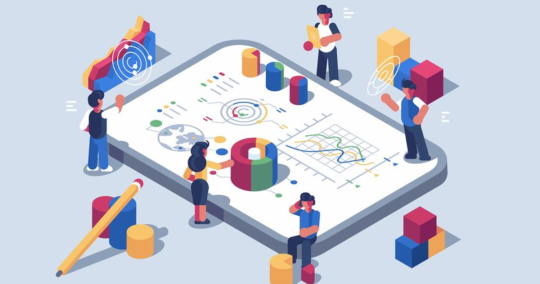
Data analytics has become an integral part of decision-making processes in various industries. To effectively analyze and derive insights from data, businesses and professionals rely on a plethora of tools and software. In this comprehensive overview, we'll explore some of the most popular data analytics tools available today, categorizing them into different types based on their primary functions.
1. Data Collection and Integration:
a. Apache Nifi: An open-source data integration tool for collecting, transforming, and distributing data from various sources.
b. Talend: An integration tool that allows you to connect, access, and manage data from different sources.
c. Zapier: A workflow automation tool that connects various apps to automate data collection and transfer.
2. Data Cleaning and Preprocessing:
a. OpenRefine: A free, open-source tool for cleaning and transforming messy data.
b. Trifacta: Offers a user-friendly interface for data wrangling and cleaning.
c. DataWrangler: Developed by Stanford, it's a web-based tool for exploring and cleaning data.
3. Data Storage and Databases:
a. MySQL: An open-source relational database management system (RDBMS).
b. MongoDB: A NoSQL database that's particularly useful for handling unstructured data.
c. Amazon Redshift: A fully managed data warehouse service provided by AWS.
4. Data Analysis and Visualization:
a. Tableau: A popular data visualization tool that can connect to various data sources.
b. Power BI: Microsoft's business analytics service for creating interactive reports and dashboards.
c. QlikView/Qlik Sense: Tools for data visualization and business intelligence.
5. Statistical Analysis:
a. R: A programming language and software environment for statistical computing and graphics.
b. Python (with libraries like NumPy and SciPy): A versatile language for data analysis and statistics.
c. IBM SPSS: A statistical software suite used for advanced analytics and data analysis.
6. Machine Learning and Predictive Analytics:
a. Scikit-Learn: A Python library for machine learning.
b. TensorFlow: An open-source machine learning framework developed by Google.
c. RapidMiner: An integrated environment for machine learning, data mining, and predictive analytics.
7. Big Data and Distributed Computing:
a. Hadoop: An open-source framework for distributed storage and processing of big data.
b. Spark: An open-source, distributed computing system that can handle large datasets.
c. Amazon EMR: A cloud-native big data platform for processing and analyzing vast amounts of data.
8. Text and Sentiment Analysis:
a. NLTK (Natural Language Toolkit): A Python library for working with human language data.
b. IBM Watson NLU: Offers natural language understanding and sentiment analysis.
c. TextBlob: A simpler Python library for processing textual data.
9. Real-time Analytics:
a. Apache Kafka: A distributed streaming platform for building real-time data pipelines.
b. Apache Flink: An open-source stream processing framework.
c. Elasticsearch: A search and analytics engine that can provide real-time insights.
10. Cloud-Based Data Analytics:
a. Google Cloud Dataflow: A serverless data processing service on Google Cloud.
b. AWS Data Analytics: A suite of services for analytics on Amazon Web Services.
c. Microsoft Azure Data Analytics: A range of analytics services offered by Microsoft's Azure cloud platform.
Remember that the choice of a data analytics tool should be based on your specific needs, the size and nature of your data, and your proficiency with the tool. It's often beneficial to have a diverse skill set and the ability to use multiple tools for different aspects of the data analytics process.
#Data Analytics#Data Transformation#Data Analytics Tools#data visualization tool#database management system
0 notes
Text

Unleash Data’s Potential: Guide to Database Management System
Enhance data structure and safeguarding through the implementation of Database Management Systems. Discover effective solutions available at Yes IT Labs.
#Database Management System#Guide to Database#What is a Database Management System#DBMS#Types of DBMS#Guidance on Database Management Systems
0 notes
Text
Whether you opt for MySQL's simplicity and speed or MongoDB's feature-rich environment, both databases can serve as solid foundations for data management.
#relational database#database#database open source#database software open source#database sql#database management system#MongoDB#database mysql#database MongoDB
0 notes
Text
Dbms Full Form: Enhancing Data Structure And Minimizing Redundancy In DBMS
A dbms full form is a logical collection of data. It includes a set of related tables and index spaces. A database frequently stores all of the data related to a particular application or a group of linked applications. A database or an inventory database could be developed. A database management system (or DBMS) is essentially a computerized data storage system.
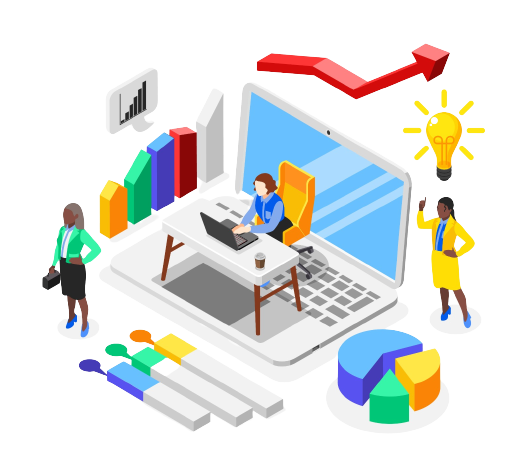
#dbms interview questions#dbms javatpoint#dbms notes#dbms definition#dbms vs rdbms#dbms tutorial#database management system#what is database#dbms full form#dbms#normalization in dbms#acid properties in dbms
0 notes
Text
The problem with doing a project (my book database project) is that I keep having Ideas that I have neither the time nor the wherewithal to accomplish.
#book tagging database project#anyway it would be cool to be able to have some sort of link to goodreads/storygraph#so that you could see data on all of the books you've read#and/or also have a way to flag books that you're thinking about for querying or tbr or whatever#i truly do not want to replicate a book tracking system#that seems like a pain#but being able to connect to one to supplement it seems cool#but again#this is just like#a vague idea i had#that will never actually happen#because i can't even successfully manage the simple improvements#much less complicated api shit
12 notes
·
View notes
Text
Smarter Data Handling with Expert DB Management 📊💡
Managing large volumes of data? Solvix Technologies offers a reliable database management system that keeps your information organized, secure, and easy to access. From setup to maintenance, we ensure your data works for you—not the other way around. Perfect for businesses that rely on accuracy and performance. Want to simplify your data operations? Let’s connect!
#database management system#database management software#database management services#database managed services provider
0 notes
Text
my old advisor was """restructured""" a while ago and my new one can be SO frustrating. they spent several emails working on the assumption that i had veteran benefits, for some reason, and in our most recent interaction they just full on ignored my question about whether a class i wanted to take would be viable or not. WHAT DO YOU THINK WE'RE HERE TO DO, MAN
#they want me to take Global Information Management Systems#which sounds hellishly boring and has a long and involved term project listed in the syllabus#and *I* want to take an advanced database class. my other database class fucking ruled i love SQL#and i think it sounds SO much more work-manageable to sort of mitigate my incredible fucking burnout#also it's the saturday before christmas now. will they even get BACK to me before the next classes start? are they done for the year??#i don't want to make someone work on christmas break but fuck. i wouldn't have to if they just acknowledged my question the first time#hush me#schoolblog#btw i appreciate that '''restructured''' meant ''we fired a bunch of people to be cheap :)''#and that it indicates my poor new advisor is probably overworked and juggling too many students#please direct your curses and etc evil energies at the school 👍
2 notes
·
View notes
Text
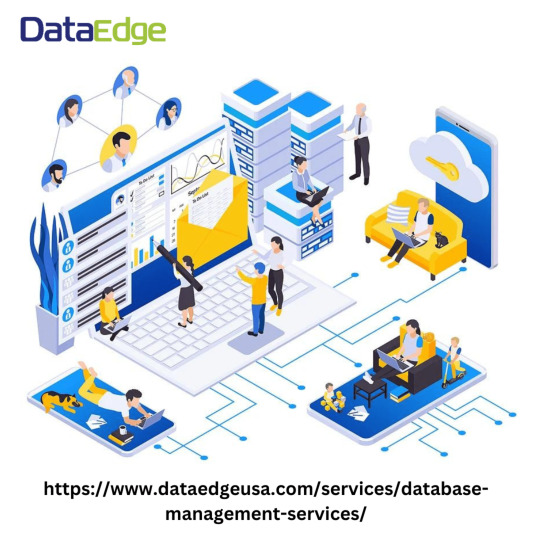
Leading database management provider Dataedge uses a range of contemporary database sources to assist business owners in managing their data and boosting productivity.
#data management#database management#database management company#data management services#database management system#database development services in usa#database software as a service#information management
0 notes
Text
Finally registered for classes this morning!
#didn’t get what I most wanted which was a database management systems course#I might try for it during add drop but I also might just accept I’ll have to take it next fall and won’t get to take data mining/analytics#we will see#but I did get my core course I most wanted which was about information organization meaning metadata schemas and such things#which I’m stupidly hyped for lmfao
4 notes
·
View notes
Text

What is DBMS Tutorial?
A DBMS Tutorial is a structured learning guide that helps you understand Database Management Systems (DBMS) software, which is used to store, manage, and retrieve data efficiently.
0 notes
Text
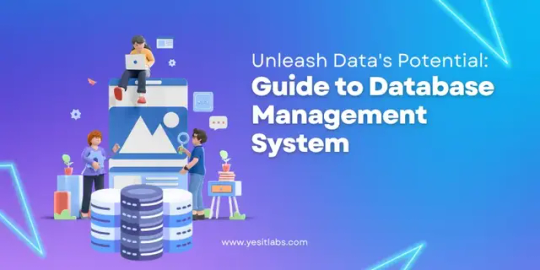
Unleash Data’s Potential: Guide to Database Management System
Enhance data organization and security through Database Management Systems. Discover solutions with Yes IT Labs.
0 notes